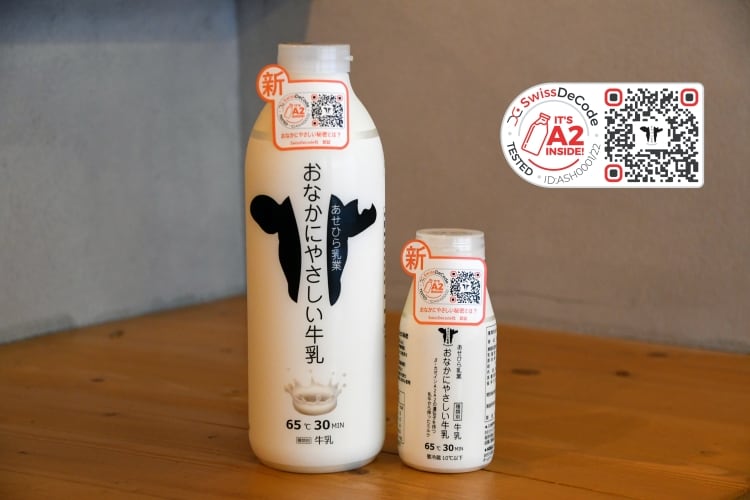The label, created by Swiss foodtech company SwissDeCode, allows dairy companies to simplify the decision-making of consumers by clearly identifying the authenticity of their products.
SwissDeCode said products such as A2-casein milk are particularly vulnerable to adulteration, but with the A2 INSIDE Label, consumers are ensured the product has been tested and can trust the brand is providing authentic A2 milk.
Asehira Dairy, a company with more than 30 years of history, started by selling yogurt, but has expanded its range of products to include pudding, caramel, cheesecake, yogurt drinks, and milk.
To show commitment to offering authentic A2 products, the company registered with the A2 INSIDE Label and is regularly controling its products with SwissDeCode’s DNAFoil A2 Cow Milk test, the world’s first rapid, on-site DNA test for A2-casein milk. By testing negative for the presence of the A1 beta-casein, the company became certified and are now displays the A2 INSIDE seal on products.
The A2 INSIDE Label on the milk packaging is accompanied by a QR code. When scanned, this code leads the consumer to a dedicated website explaining the concept of A2-casein milk and the testing process the milk went through in order to receive the A2 INSIDE Label.
By communicating this information clearly, SwissDeCode said, dairy companies increase their credibility, trust and brand recognition, not only in the eyes of the consumer, but also with business partners and stakeholders.
Milk beta-casein can be of mainly two types: A1 and A2, with A2 milk containing only the A2 type.
Originally, all cows carried the A2 beta-casein gene exclusively, but over time they underwent a genetic mutation, which resulted in a different version of the beta-casein gene that codes for the A1 beta-casein type. Migration and modern farming resulted in the spread of this genetic mutation, which led to a mixed cattle population that can produce A1, A2 or both types of beta-casein.

